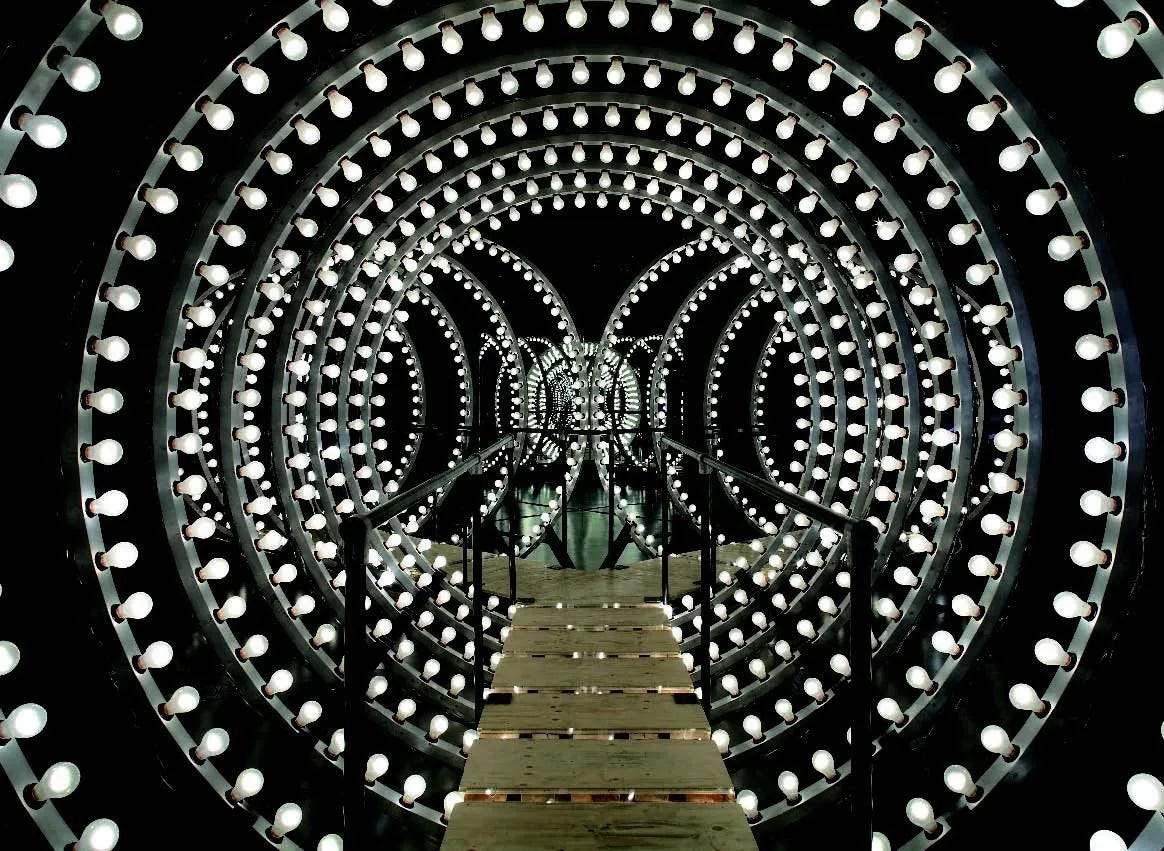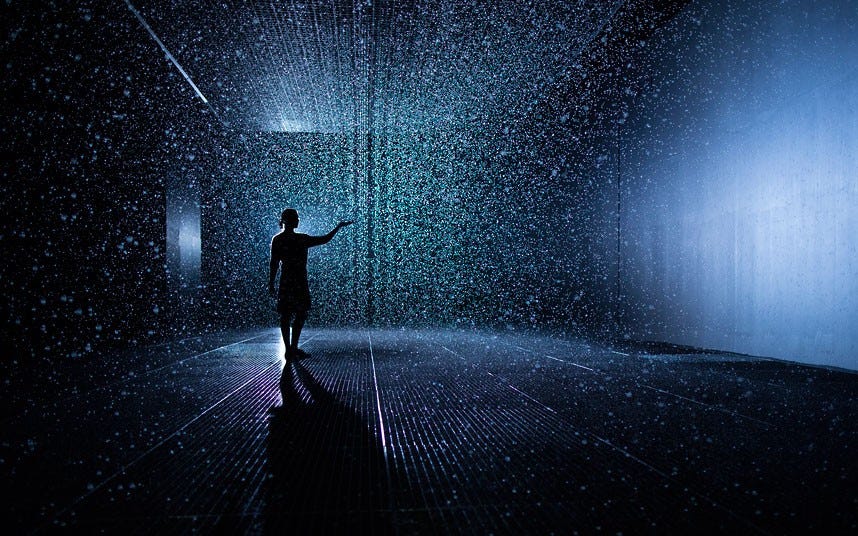Carsten Höller, Y (2003). Jen Fong Photography / TBA21 ©Carsten Höller.
Two roads diverged in a wood, and I— I took the one less traveled by, And that has made all the difference -excerpt from The Road Not Taken by Robert Frost
These three lines of poetry, oft repeated, have become a ‘Carpe Diem’ call-to action for those facing an inflection point, a metaphorical fork in the road – the lesson imparted being that we should always take the road less traveled by.
For the vast majority of my life, this poem not only resonated, its advice proved sound. At university and in graduate school, I chose to study art history – whilst my father loudly declared it to be a colossal mistake. After graduate school in New York City, I moved back to LA – which at the time was considered a smaller art scene—as my professors protested loudly that I would be more successful staying in the center of the art market. After building a successful career working for prestigious museums, I chose to leap into the for-profit realm rather than continuing on the institutional trajectory – whilst many friends and colleagues declared it to be a mistake to ‘give up’ the prestige of a MoMA business card. What followed was a phenomenal decade of travel, cultural immersion, learning and opportunity beyond anything I’d experienced previously.
Choosing the road less traveled by has seemingly served me well, and indeed became an unofficial discernment tool for me whenever I was presented with two opportunities. I’d ask myself, ‘Which one scares (excites) me the most?’ or ‘Where will I be pushed beyond my current skills and talents?’ and most likely take whichever one offered a challenge or learning opportunity. The road less traveled by.
Whether or not we accept Frost’s concluding declaration that choosing the road less traveled by has made all the difference—more on that later—we are missing some beautiful insights if we only focus on this final line. In the previous stanzas—before he makes a decision—he models his discernment process for us at an important point of inflection.
Two roads diverged in a yellow wood, And sorry I could not travel both
Frost highlights one fundamental challenge in choosing between two paths: both are appealing in their own way, and we fear choosing one because it means not choosing another. The either/or scenario engenders the fear of missing out on whatever joys and opportunities the path we do not choose might have held or us, and we wish we could have the best of both worlds. When faced with this decision, how does Frost choose his path?
And be one traveler, long I stood And looked down one as far as I could To where it bent in the undergrowth;
He looks down the path as far as he can, likely imagining and projecting outcomes. In a similar situation, we might say to ourselves: If I choose X—and work really hard / apply myself / show up fully—in time, it will likely yield some great opportunity (new position, job perks, etc.). We often choose a path based upon a projected future, based primarily on assumptions, that lies beyond as far as the eye can see.
Then took the other, as just as fair, And having perhaps the better claim, Because it was grassy and wanted wear;
Frost’s prose above models the human desire to leave an impact – in the lives of our friends and family, in our workplace, and in the world – so it follows that we would be drawn (as he is) to the path where we believe we’ll be able to have an impact, and choose accordingly.
Olafur Eliasson, Panorama at ARoS in Aarhus, Denmark. © R. Ian Lloyd.
Oh, I kept the first for another day! Yet knowing how way leads on to way, I doubted if I should ever come back.
Herein, Frost alludes to the reason for the analysis paralysis we often feel at a point of inflection, especially a large one; it stems from our belief in the finality of said decision. We believe – even though it’s not necessarily the case – that we can never walk back a decision, that we must continue down that ‘path’ we have chosen in perpetuity, even if we find after a few steps that it is not the right path for us, or seemingly worse, discover after a few thousand steps that it is no longer the right path for us. We’ve been conditioned to believe that it’s too late, at that point, to change course and are thus afraid of every major decision because it feels finite and irrevocable.
While I love Frost’s Two Roads, I have recently begun to wonder if its concluding prose hasn’t been inadvertently weaponized against us – turning every decision into one between the courageous choice down the untrodden path or the safe, predictable choice down the well-traveled path. Most decisions, however, aren’t nearly as binary. Choices are rarely safe or adventurous, good or bad, right or wrong. Most paths bring both opportunity and challenges, and require leaning on our past experience AND breaking with it. So, it’s rarely quite as simple as choosing between two paths, and moreover, choosing between polarized paths.
Perhaps, this poem and the beautifully articulated metaphor contained therein is a bit too binary – literally and metaphorically – for the world in which we currently inhabit; a world that is fast-moving, fast-evolving, fast-learning. In such a world, we cannot look down any one path very far because the conditions will most likely have changed before we reach that spot – or that spot may not even exist by the time we reach it. Projected futures rarely materialize as imagined and often the greatest opportunities come from unforeseeable serendipity.
Random International, Rain Room, 2013. Credit: Christopher Pledger.
Perhaps then, Deepak Chopra’s words are more helpful in today’s chaotic world:
“If you obsess over whether you are making the right decision, you are basically assuming that the universe will reward you for one thing and punish you for another.The universe has no fixed agenda. Once you make any decision, it works around that decision. There is no right or wrong, only a series of possibilities that shift with each thought, feeling, and action that you experience.”




Gita:
2.47
Thy right is to thy work alone,
But never to the fruits of work;
Let not the rewards of action be
Thy motive; Nor yet be attached to inaction.
2.48
Do thy work; renounce attachment,
And be balanced in success or failure;
Such evenness of mind is called Yoga.
Yvette here, I do like this post. 👍🏾😀
For a long time, I tried to take both roads, as early as age 10. It was very painful.
A lot of family pressure, insecurities, and societal expectations helped keep me in this place of internal turmoil — regardless of the external success.
It was a few / several years ago that I decided the best path is one I can never fully chart out because we never know the challenge and unexpected awesomeness that life will bring.
What I do hold fast to long term are intentions for how I want to contribute to society, what path I think I went to be on, a commitment to uncovering more of my spirituality (or intuition) and a commitment to flexibility. (This is what’s in the goals and affirmations I read each morning.)
That flexibility piece is so important. It is absolutely fine for me to change my mind - even great.
I’ve learned the best way to know if I like a path I’m really excited about, is to do it. In a few weeks or months I’ll know — versus spending years pining for it.
This experimentation teaches me so much about myself and the world.
I’ve also found that when I am committed to a path … people (often and sometimes eventually) show up to help (as long as I’m know it’s still my path and my journey - not our journey) and the relationships are richer than I could have expected.
Choosing to live this way also means I’ve gotten used to
- People laughing in my face when I say what I’m up to
- Telling me XYZ is impossible, dumb, dangerous, a waste of money, woo woo, unrealistic, too intense, too feminine, too masculine and whatever else the person decides to project from their experience
I’ve also come to feel the immense joy and delight in meeting a fellow traveler or a supporter for a part of the journey.
The relationship with myself (at a spiritual or intuitive level), the relationships and impact on people along the way, and the joy of the experience … I’m learning they IS life. The journey is life itself.